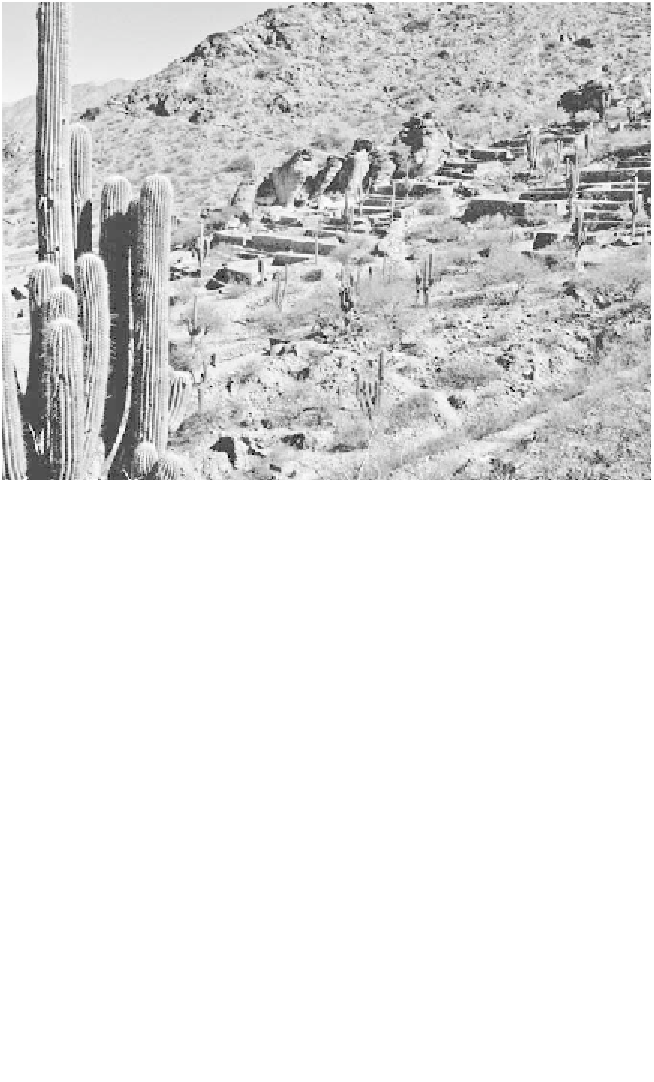Travel Reference
In-Depth Information
The Diaguita and other agriculturists built villages in easily defended sites and prepared irrigated
fields below, as at this ruin in northern Tucumán Province.
(Photo by Cyrus S. Cousins)
and skirts from llama wool, and shaped pottery in geometric designs
similar to their Andean neighbors in Bolivia and Peru.
Some of the cultural groups shared language patterns, but most
Diaguita spoke a language different from the Aymara and Quechua
dominant in the Andean highlands. The Diaguita built granaries
of stone and dams on rivers and streams to divert floodwater into
marshlike depressions around which they planted crops, especially
corn. This staple crop originated in present-day Mexico and migrated
through Peru to northwest Argentina well before the birth of Christ.
The ancient Argentines of the northwest also hunted turkey and other
small game, fished in the streams and rivers, and collected
algarroba
pods and prickly pears to supplement their diets.
Characteristically, while the Diaguita remained the dominant
group of the region just before the European incursion, northwest
Argentina supported an abundance of cultural diversity. Peoples of
many cultures, such as the Atacameño, Humahuaca, Chicha, and
Lule, shared the landscape, all of them living in relative harmony
with the Diaguita, enforced by the imperial Inca hegemony. Everyone





